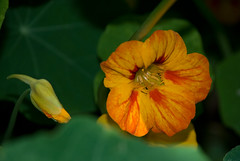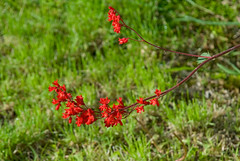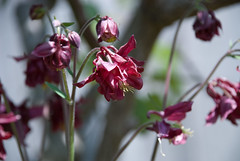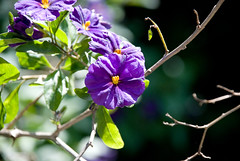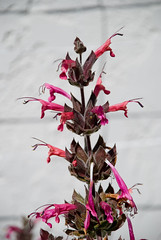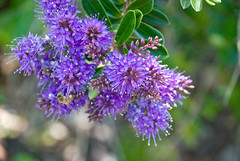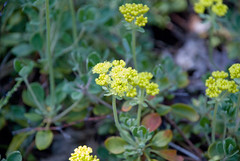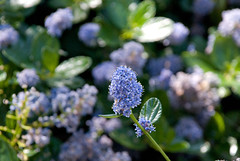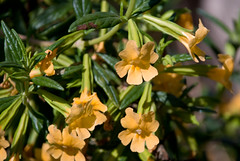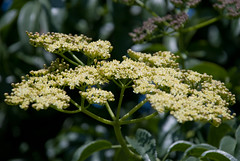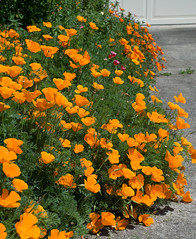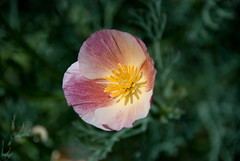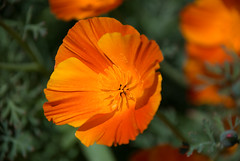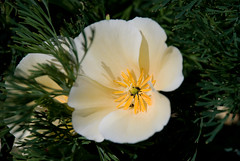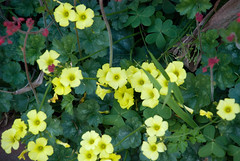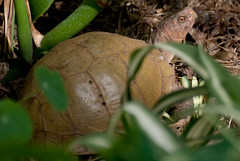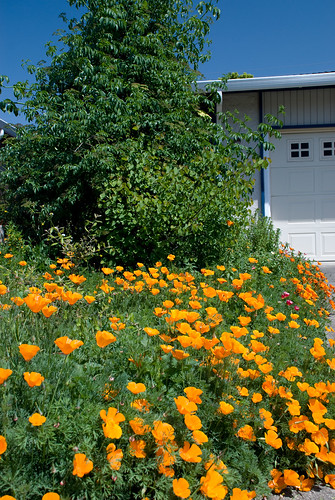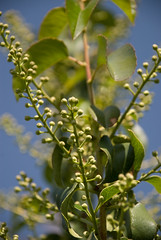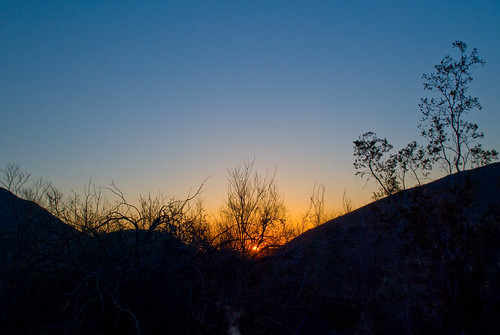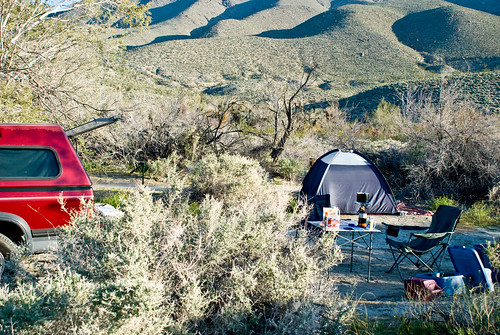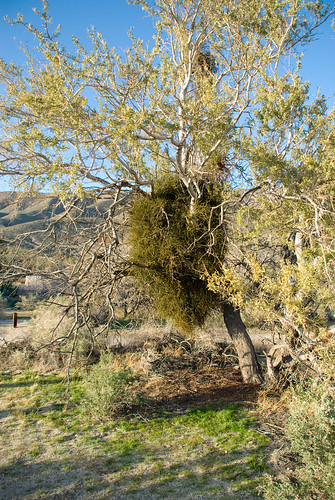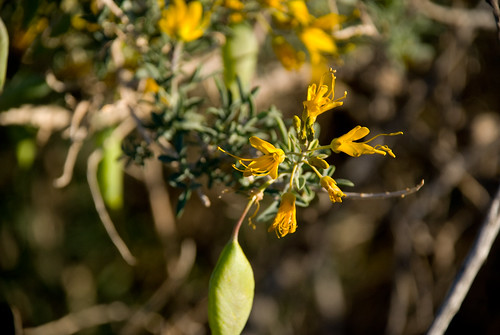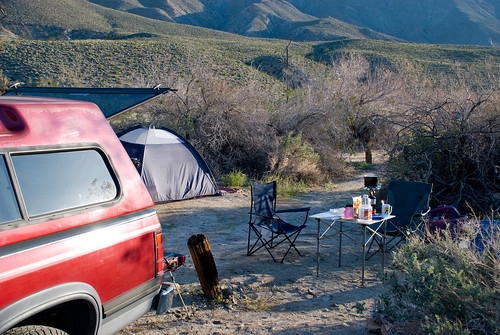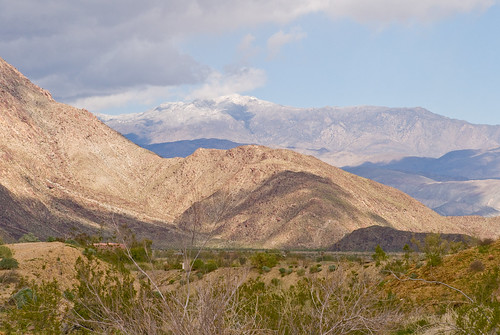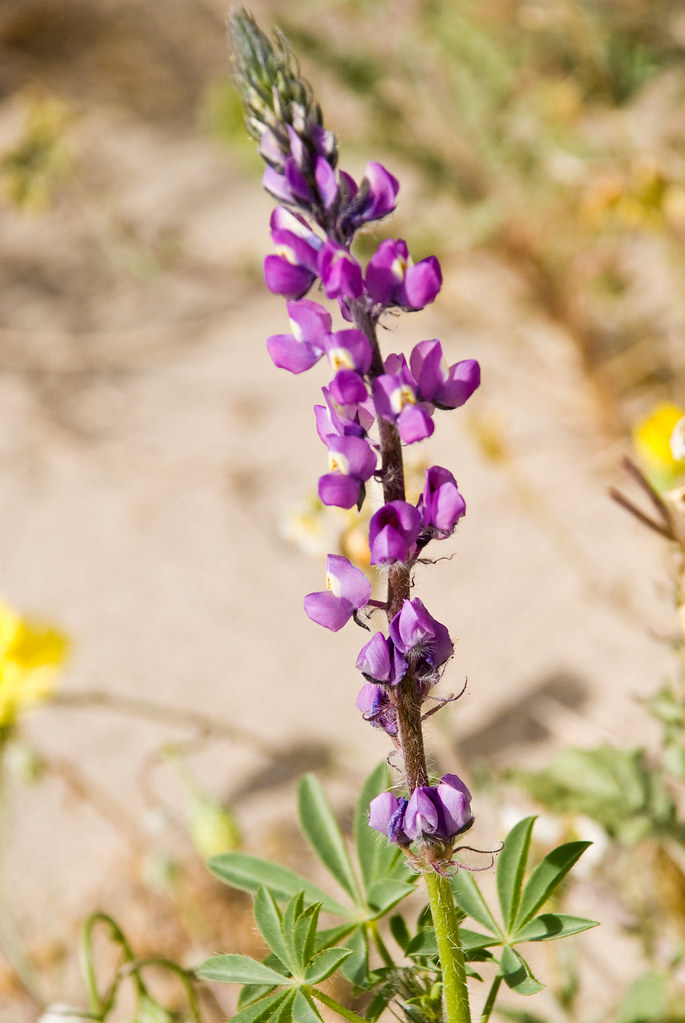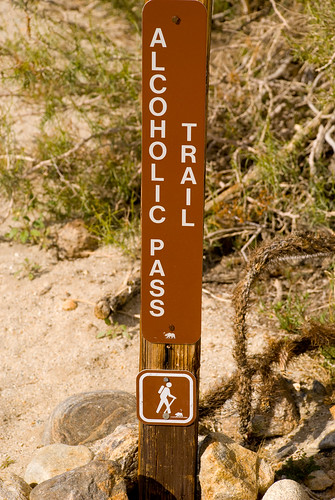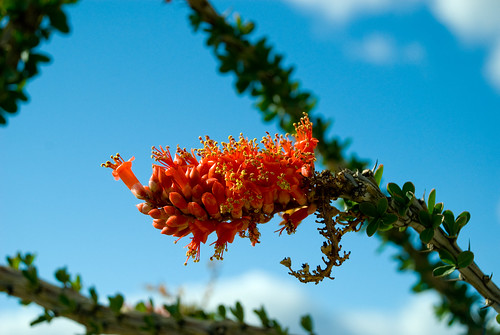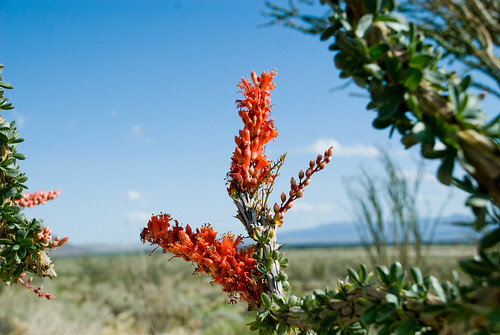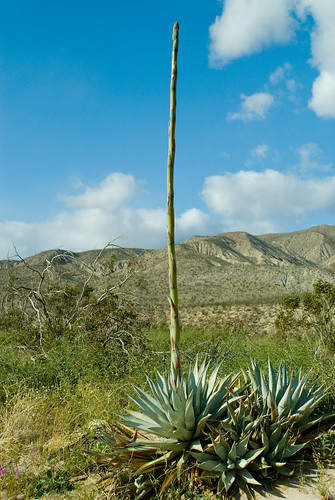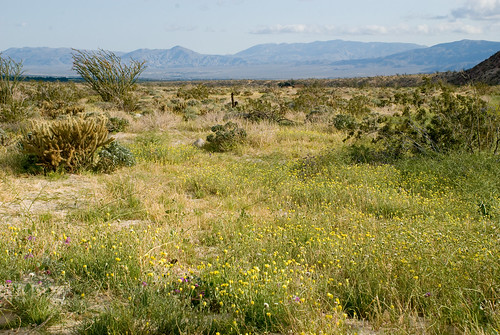On the first Wednesday of our Adventure, we decided that, while Fish Creek Primitive Campground was nice and peaceful, it was mostly on the opposite side of the park from where the next parts of our search for flowers and other adventures would take us. So, we broke camp, loaded up both truck and Jeep, and headed for town. We ran a couple of errands, then left the truck in The Mall parking lot. We took the Jeep up toward Coyote Canyon in search of wildflowers.
The various reports indicated that there were maximal numbers of species up that way. But the reports came with admonitions that the best flowers were between "First Crossing" and "Second Crossing" and that you couldn't pass "Third Crossing" because it was "still too deep." Whoa! We smelled Adventure! No, no. We had no intention of attempting the Third Crossing. But "Crossing" took on the meaning of crossing a stream of running water, so it could be interesting.
I had seen a few Desert Lilies by this time, but the first section of the route up Coyote Canyon was quite cluttered with them!
You may have noticed that the place also had a fair number of Arizona Lupine blooming around the feet of the lilies.
And you can see that there are other, yellow flowers blooming around the lupine. Those are Desert Dandelion.
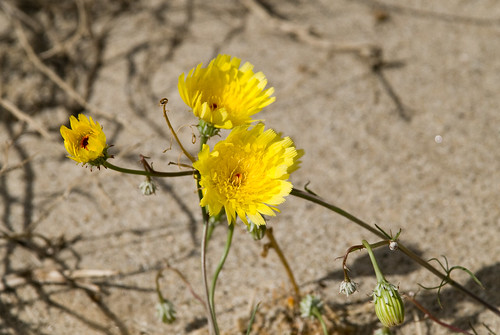
The Desert Dandelion is a bit unusual in that it's a type of flower called a "composite," but it's a little different from other composites. A daisy is a composite flower like most composite flowers. What this means is that one "flower" is actually made up of a BUNCH of flowers. Each of the daisy's petals is actually a single petal of a single flower called a "ray flower." All the other petals on the ray flower are teeny to non-existent. Then there's the "disk" in the center of the daisy. Actually, the disk is also made up of a BUNCH of flowers called, oddly, "disk flowers." They all have teeny petals like the non-ray petals of the ray flowers. (Go look at a daisy or a sunflower with a magnifying glass sometime.)
Anyway, back to the Desert Dandelion. It's a composite in that it's made up of a BUNCH of ray flowers, but it has no disk flowers.
On the other side of the road there's a Fremont's Pincushion. It's also a composite, but it has all disk flowers and no ray flowers!
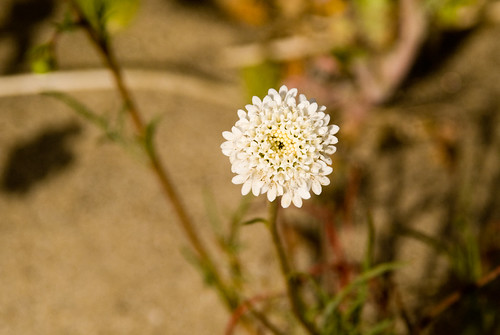
Farther along the road we came across a trail marker that I just couldn't resist.
I don't know the story behind the name, but...
Everywhere we went the Ocotillo were blooming or getting ready to bloom.
And the stems and trunks of the Ocotillos were simply covered in green leaves.
As soon as it rains, the ocotillos put out all these rich green leaves and start photosynthesizing up a storm. But as soon as it gets hot and dry, the ocotillo drops all those green leaves and relies on the little bit of green in the stems and trunks to make the food they need to get by. Since it had just rained on Sunday, we were still treated to the bright green of the leafy version of the ocotillo forests.
Another interesting plant is the Agave. It's a succulent (stores its moisture and food in its fleshy "leaves") that will grow as a low, spiky plant for years. Then one year, when the time is right, it will send up a giant stalk and bloom!
This one and most of those we saw that were sending up stalks were almost, but not quite, ready to bloom.
Anyone who tells you that a desert is nothing but sand and devoid of life just doesn't know what they're talking about.
